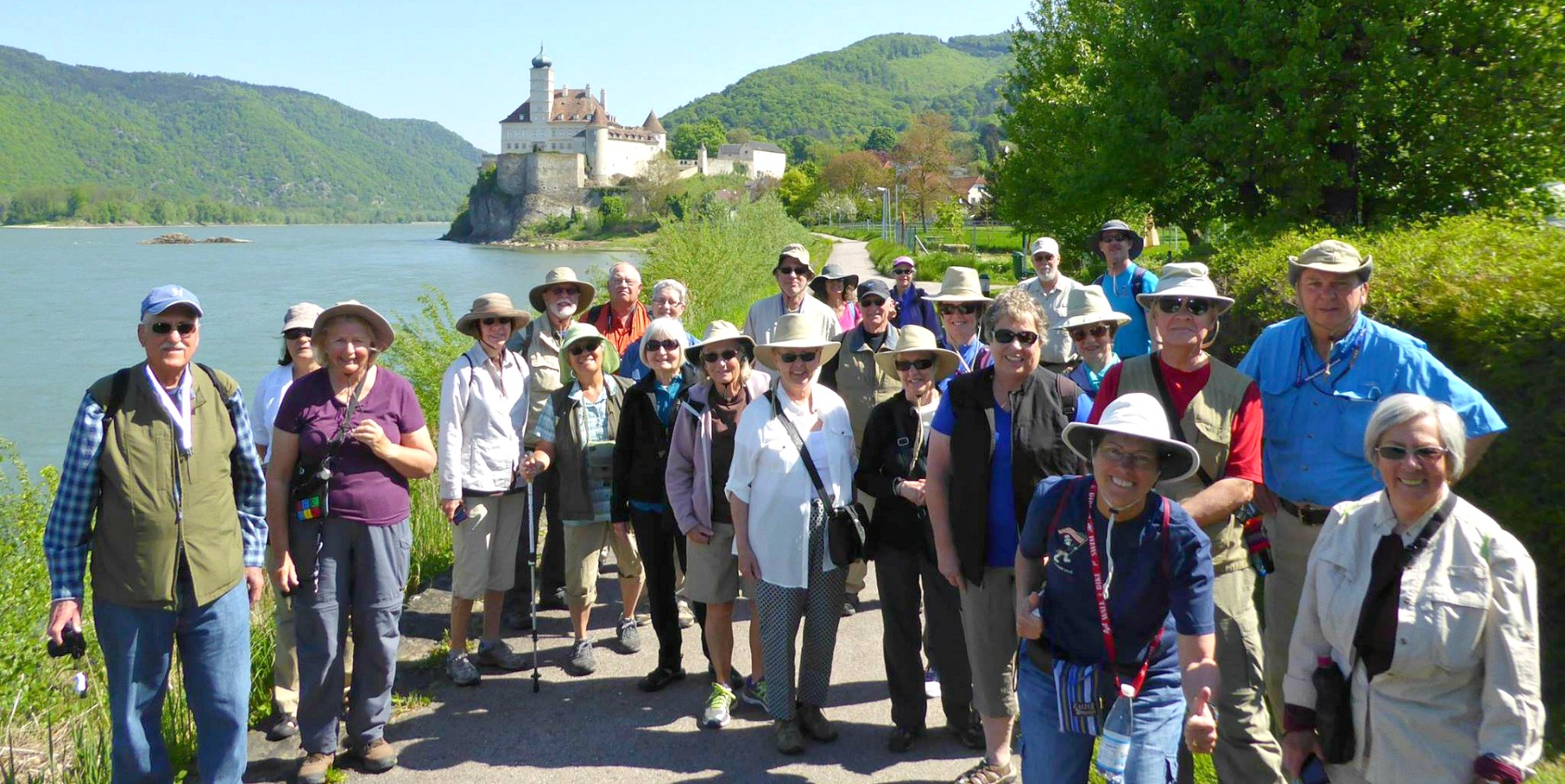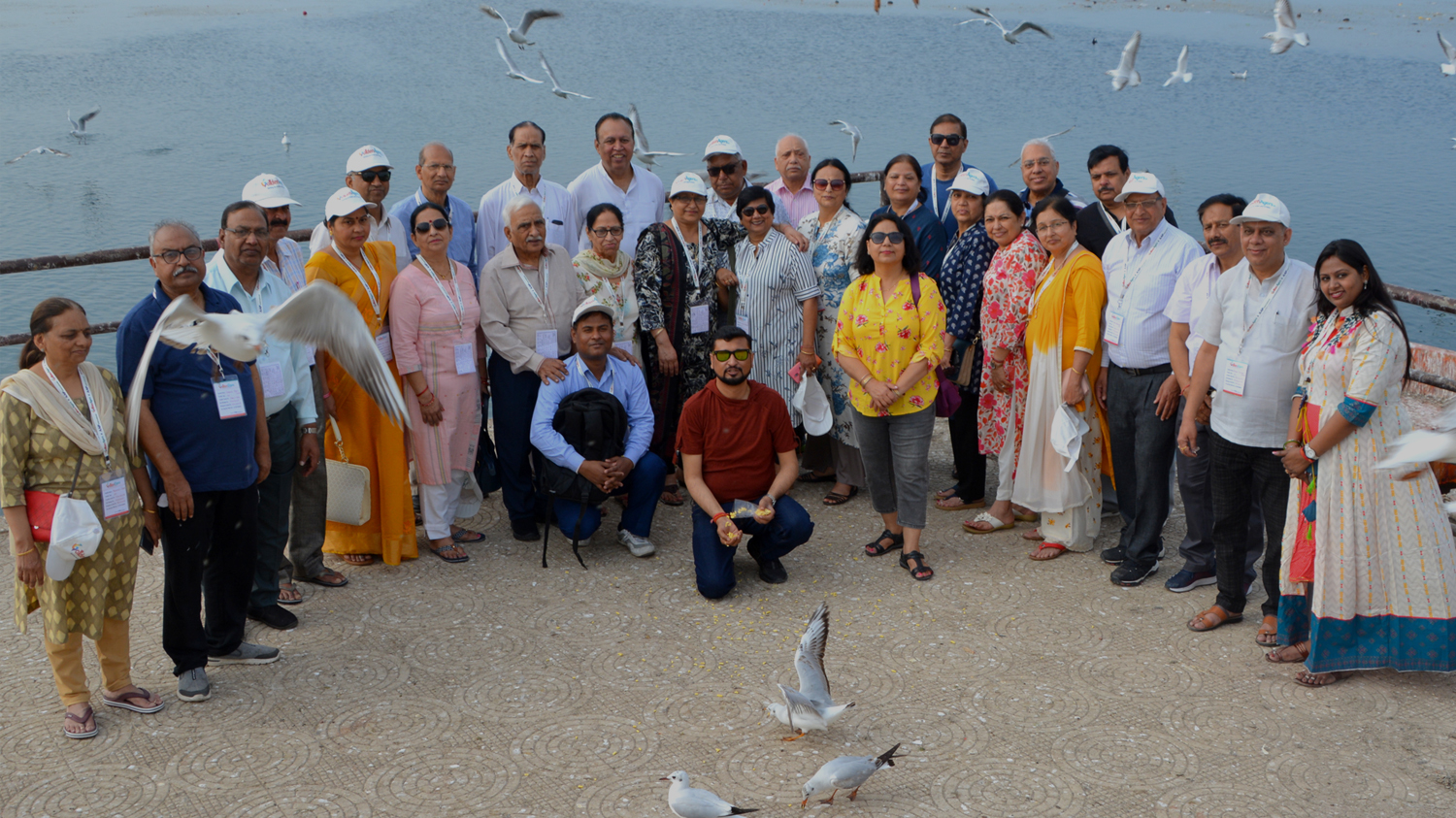Tour groups for seniors offer a unique blend of adventure, relaxation, and camaraderie, catering to diverse interests and activity levels. From leisurely cruises to active hiking expeditions, the options are vast, each promising a tailored experience designed to meet the specific needs and preferences of older travelers. This guide explores the various types of senior tour groups, popular destinations, essential planning considerations, and crucial health and safety aspects, aiming to equip prospective travelers with the knowledge necessary to embark on a fulfilling and enriching journey.
Understanding the nuances of senior travel, including accessibility, inclusivity, and cost-effectiveness, is paramount. We’ll delve into the critical factors to consider when selecting a tour, examine the importance of choosing reputable operators, and analyze real-world reviews to illustrate the diverse experiences of senior travelers. The goal is to empower individuals to make informed decisions and embark on a memorable adventure that aligns perfectly with their expectations.
Types of Tour Groups for Seniors
Choosing the right tour for senior travelers requires careful consideration of individual needs and preferences. Factors such as physical capabilities, desired activity levels, and travel style significantly impact the overall experience. This overview categorizes senior tour groups based on activity levels, highlighting features, benefits, and potential drawbacks.
Categorization of Senior Tour Groups by Activity Level
The following table categorizes senior tour groups based on activity level, providing examples of typical itineraries and target audiences. Understanding these distinctions allows seniors to select a tour that aligns perfectly with their capabilities and desires.
| Type | Activity Level | Typical Itinerary Example | Target Audience |
|---|---|---|---|
| Relaxing Coastal Cruise | Relaxed | Daily onboard activities, leisurely shore excursions with minimal walking, scenic views, onboard entertainment. | Seniors prioritizing comfort and relaxation; those with limited mobility. |
| Historic City Break | Moderate | Guided walking tours of historical sites (with options for rest stops), visits to museums and cultural attractions, comfortable transportation. | Seniors with moderate mobility; those interested in history and culture. |
| Active Adventure Tour | Active | Hiking, biking, kayaking, or other physically demanding activities; longer walking distances; exploration of natural landscapes. | Physically fit seniors with a high level of endurance and an adventurous spirit. |
| Luxury Escorted Tour | Relaxed to Moderate (variable) | Pre-planned itineraries with comfortable accommodations, private transportation, curated experiences, and optional excursions catering to various activity levels. | Seniors seeking a high level of comfort and convenience; those with varying mobility levels. |
Relaxed Tours: Features, Benefits, and Limitations
Relaxed tours prioritize comfort and minimal physical exertion. Features often include shorter walking distances, accessible transportation, and ample opportunities for rest. Benefits include stress-free travel and the ability to enjoy the destinations at a comfortable pace. However, limitations might include fewer opportunities for exploration and a potentially less immersive experience compared to more active tours. Examples include cruises focusing on onboard amenities or tours with extensive use of motorized transportation.
Moderate Tours: Features, Benefits, and Limitations
Moderate tours balance physical activity with relaxation. They often involve moderate walking distances, comfortable pacing, and a mix of structured and free time. Benefits include a good balance of sightseeing and relaxation, allowing seniors to engage with the destinations without excessive exertion. Limitations may arise for seniors with significant mobility issues, as some walking may be unavoidable.
Examples include guided walking tours with regular rest stops or tours incorporating a mix of transportation options.
Active Tours: Features, Benefits, and Limitations
Active tours demand a higher level of physical fitness and endurance. They often involve longer walking distances, strenuous activities, and potentially challenging terrain. Benefits include a more immersive and engaging experience, the opportunity to explore remote areas, and a boost to physical health. Limitations include potential physical strain, increased risk of injury, and the need for a higher level of fitness.
Examples include hiking tours in mountainous regions or biking tours covering significant distances.
Luxury Escorted Tours: Features, Benefits, and Limitations
Luxury escorted tours provide a high level of comfort and convenience. They often include private transportation, upscale accommodations, and curated experiences. Benefits include reduced stress, personalized service, and access to exclusive experiences. Limitations might include higher cost and a potentially less flexible itinerary compared to independent travel. Examples include tours with private guides, luxury hotels, and pre-arranged excursions.
Essential Considerations for Senior Travel Planning

Planning a tour for senior citizens requires careful consideration of several key factors to ensure a safe, enjoyable, and memorable experience. Overlooking these crucial aspects can significantly impact the overall trip satisfaction and even pose health and safety risks. This section Artikels five essential factors to prioritize when selecting a tour group specifically designed for seniors.
Prioritizing Physical Capabilities and Accessibility
The most critical factor when choosing a senior tour is the physical demands of the itinerary. Tours should be designed with the physical limitations of older adults in mind. This includes considering the amount of walking involved, the accessibility of transportation and accommodations, and the availability of rest stops and assistance. For example, a tour that involves extensive hiking or navigating cobblestone streets might not be suitable for seniors with mobility issues.
Conversely, a tour focusing on comfortable transportation, manageable walking distances, and accessible accommodations ensures a more comfortable and enjoyable experience.
Assessing the Tour Operator’s Reputation and Experience
Choosing a reputable and experienced tour operator specializing in senior travel is paramount. This ensures a higher level of professionalism, attention to detail, and preparedness for potential issues. Researching the operator’s history, reading reviews from previous senior travelers, and verifying their licensing and insurance are essential steps. A company with a proven track record of catering specifically to senior travelers is more likely to provide appropriate support, emergency assistance, and a well-organized itinerary.
Enhance your insight with the methods and methods of military vacation travel.
For instance, an operator with dedicated staff trained in handling senior-specific needs is a strong indicator of quality.
Reviewing the Itinerary and Pace of the Trip
The itinerary should be carefully reviewed for its suitability to senior travelers. The pace of the tour must be realistic and avoid over-scheduling. Sufficient time for rest and relaxation should be incorporated into the daily plans. A well-structured itinerary provides a balance of planned activities and free time, allowing seniors to participate at their own pace and avoid fatigue.
A tour with overly ambitious daily schedules or limited downtime can lead to exhaustion and negatively impact the overall enjoyment.
Understanding the Level of Medical Support and Insurance
Senior travelers require a higher level of medical support and insurance than younger travelers. It is crucial to confirm that the tour operator has adequate provisions for medical emergencies, including access to medical facilities, emergency contact information, and appropriate insurance coverage. This includes clarifying the level of medical assistance provided, whether a medical professional accompanies the group, and the procedures for handling medical emergencies.
Understanding the insurance coverage offered, including medical evacuation, is vital to mitigate potential financial and health risks.
Evaluating the Cost and Value of the Tour Package
While cost is a significant consideration, it shouldn’t be the sole deciding factor. Seniors should evaluate the overall value offered by the tour package, considering the services provided, the quality of accommodations, and the level of support offered. Comparing tour packages based solely on price can lead to compromising on essential factors such as comfort, safety, and overall experience.
Analyzing the value proposition of each package ensures that the investment aligns with the expected level of service and comfort.
Senior Tour Group Checklist
Before booking, use this checklist to evaluate tour options:
| Factor | Evaluation | Notes |
|---|---|---|
| Physical Accessibility | Consider walking distances, transportation, and accommodation accessibility. | |
| Tour Operator Reputation | Research reviews, verify licensing and insurance. | |
| Itinerary Pace | Assess daily schedules, free time, and rest opportunities. | |
| Medical Support & Insurance | Clarify medical assistance, emergency procedures, and insurance coverage. | |
| Cost & Value | Compare packages based on services, accommodation quality, and support. |
Health and Safety Aspects of Senior Tours: Tour Groups For Seniors

Safe and enjoyable travel for senior citizens requires meticulous planning and execution, focusing on mitigating potential health risks and ensuring swift response to emergencies. Reputable tour operators prioritize these aspects, incorporating robust protocols and comprehensive support systems. This section details the key health and safety considerations integral to senior travel arrangements.
Safety Protocols and Emergency Procedures
Senior tour groups employ a range of safety protocols to minimize risks and ensure a smooth journey. These typically include pre-trip health questionnaires to identify potential vulnerabilities, 24/7 access to emergency contact personnel, and detailed itineraries shared with participants and emergency contacts. On-site, tour guides receive specialized training in first aid and emergency response, and travel plans often incorporate regular check-ins with participants.
In the event of a medical emergency, procedures are in place for immediate assistance, including contacting local medical services and arranging for transport to appropriate facilities. Detailed emergency contact information, including local emergency numbers and the tour operator’s emergency contact details, is readily available to participants. For example, a tour might specify a designated meeting point in case of separation from the group, along with a clearly defined communication plan.
Medical Assistance and Insurance Coverage, Tour groups for seniors
Comprehensive medical assistance and insurance coverage are crucial components of any senior tour. Reputable operators often partner with travel insurance providers offering specialized plans for seniors, which may include coverage for medical emergencies, evacuations, and trip cancellations due to illness. Pre-existing conditions are often addressed in the policy, though specific coverage may vary. The tour itself may incorporate access to medical professionals, either through partnerships with local clinics or by having a trained medical personnel accompany the group, especially on longer or more adventurous trips.
For instance, a tour operating in a remote area might include a nurse or paramedic as part of the support team. Clear communication about the insurance coverage and available medical resources is vital for both the tour operator and the participants.
Best Practices for Ensuring Senior Well-being
Several best practices enhance the health and well-being of seniors during tours. These include pacing activities to avoid overexertion, providing ample opportunities for rest and relaxation, and offering accessible accommodations and transportation. Dietary needs and preferences are carefully considered, with options available to cater to various health conditions. Regular communication between the tour guide and participants helps address individual needs and concerns proactively.
For example, a tour might incorporate frequent rest stops on long journeys, offer alternative activities for those with mobility limitations, and provide readily available hydration and snacks throughout the day. Furthermore, tours often incorporate activities that promote physical and mental well-being, such as gentle walks, yoga sessions, or engaging cultural experiences.
Reviews and Testimonials from Senior Travelers
Analyzing reviews and testimonials offers invaluable insights into the quality and suitability of senior tour packages. Feedback from previous travelers provides a realistic perspective, often highlighting aspects overlooked in marketing materials. By examining both positive and negative comments, potential travelers can make more informed decisions.
Examining reviews reveals common themes and recurring issues that significantly impact the overall senior travel experience. Positive reviews often focus on specific aspects such as comfortable accommodations, engaging itineraries, and attentive tour guides, while negative feedback frequently centers around accessibility challenges, unclear communication, or unexpected expenses.
Analysis of Reviews for “Grand European Adventure” Tour
The “Grand European Adventure” tour, a popular 14-day European package targeting senior travelers, received a range of reviews.
“The tour was absolutely fantastic! Our guide, Maria, was incredibly knowledgeable and helpful. The pace was perfect for us seniors, and the hotels were luxurious. I would highly recommend this tour to anyone!”
Eleanor P., 72
“While the itinerary was interesting, the amount of walking involved was excessive. Many of us struggled to keep up, and there wasn’t enough time for rest. The tour description was misleading regarding the level of physical activity required.”
Arthur S., 78
These examples illustrate the diverse experiences encountered by seniors on the same tour. Eleanor’s positive review highlights the benefits of a well-organized itinerary, knowledgeable guide, and comfortable accommodations. Conversely, Arthur’s negative feedback emphasizes the importance of accurate descriptions regarding physical demands and the need for adequate rest periods.
Common Themes in Senior Travel Reviews
Positive feedback consistently emphasizes factors such as:
- Well-paced itineraries allowing for sufficient rest and relaxation.
- Accessible accommodations and transportation.
- Knowledgeable and attentive tour guides.
- Clear communication and detailed pre-trip information.
- Value for money and transparent pricing.
Negative feedback frequently focuses on:
- Overly strenuous activities or excessive walking.
- Poorly maintained accommodations or transportation.
- Unresponsive or unhelpful tour guides.
- Hidden costs or unexpected expenses.
- Lack of clear communication or inadequate pre-trip information.
Actionable Advice for Selecting Senior Tour Groups
Based on the analysis of reviews, prospective senior travelers should:
Prioritize tours with detailed itineraries specifying the level of physical activity required. Carefully review photos and descriptions of accommodations to ensure they meet accessibility needs. Look for reviews that mention the attentiveness and helpfulness of tour guides. Pay close attention to comments regarding communication and transparency in pricing. Consider contacting the tour operator directly to ask clarifying questions before booking.
By thoroughly researching and analyzing reviews, seniors can significantly increase their chances of enjoying a safe, comfortable, and memorable travel experience.
Choosing the right tour group for seniors requires careful consideration of individual needs, preferences, and budget. By understanding the various tour types, destinations, and essential planning factors, prospective travelers can confidently select an experience that prioritizes their well-being, safety, and enjoyment. This comprehensive guide serves as a valuable resource, empowering seniors to embark on enriching and unforgettable travel adventures.



